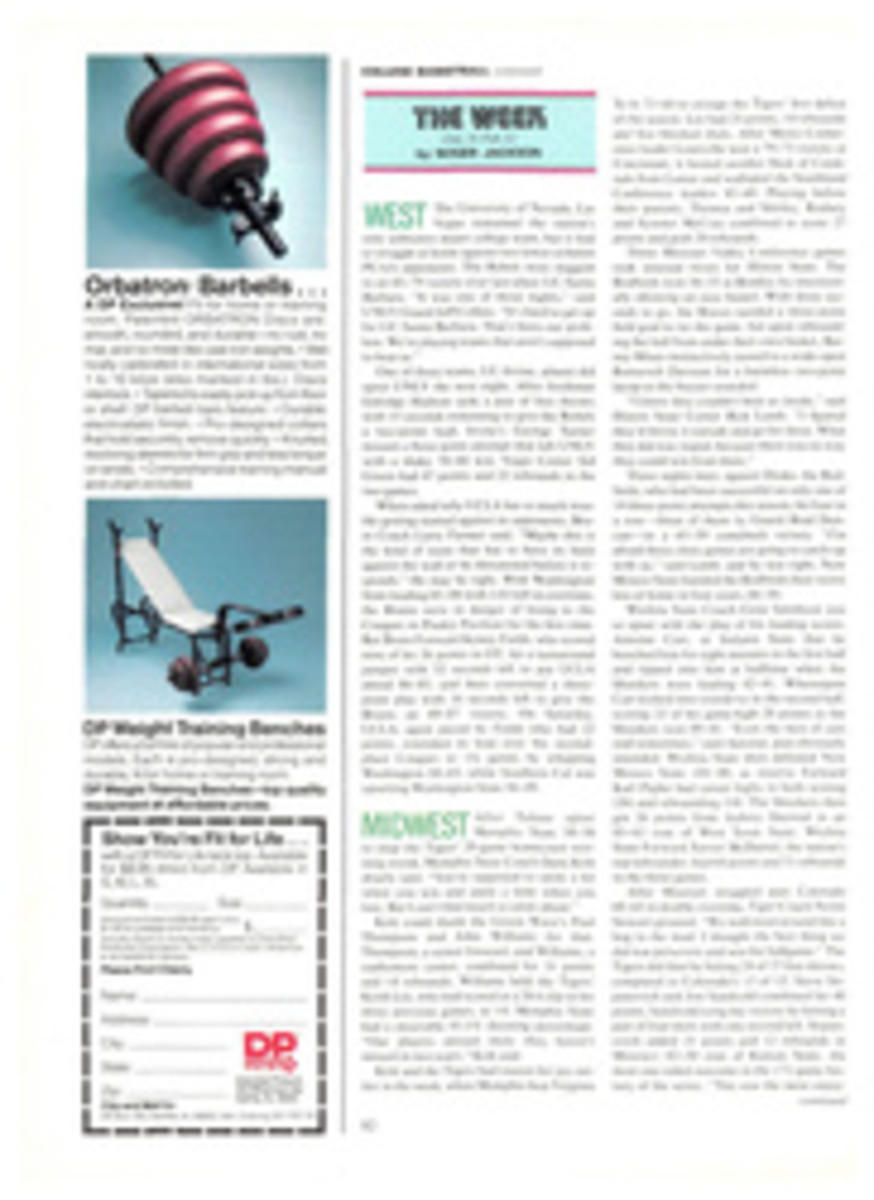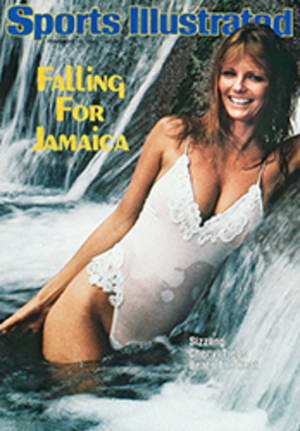
Come Rain Or Shine
Tom Kite may have wondered whether he was scattering asterisks all over the Monterey Peninsula last Saturday when he stunned Pebble Beach with a course-record 62, but inasmuch as that round of "housekeeping" golf more or less enabled him to win the Bing Crosby National Pro-Am, the most glittering event on the winter schedule, he must be granted his due for giving the 1983 PGA Tour a look of credibility. Kite captures Crosby has a more comfortable ring to it than Gil Morgan does whatever it was he did, or Keith Fergus wins something or other, or Bob Gilder comes through at wherever. Though Kite, a hardworking Texan, doesn't win all that often, it somehow feels as if he does because he's on the scoreboards as regularly as paint.
The soggiest and worst-attended Crosby in recent years wasn't really over after Kite shot his 10-under round with the help of bad-weather rules that allowed golfers to lift, clean and place their balls in the fairway before whacking their shots, but that 62 went a long way toward ending it. Kite is a steady, reliable fellow to begin with, and that score gave him the lead over a group of challengers that wasn't exactly the Hall of Fame. The Hall of Fame was farther back.
What Kite did on cold, rainy Sunday was simply try to keep warm and dry—and try even harder to keep his glasses clean. He did it very well, bagging a couple of early birdies and rocking back and forth for much of the round between a four-and five-shot lead over his nearest challengers, who, as Rex Caldwell later said, were "too miserable to get pumped up." Oh, by the way, one thing hasn't changed on the tour. Caldwell was second for the third week in a row—a string that has made him $95,000 richer.
Kite's closing round of 73 gave him a 72-hole total of 276, 12 under par and a safe two shots ahead of Caldwell and the reliable Calvin Peete. Toward the end of the round, Kite did have to gather himself up and "stop the bleeding," as they say. A bad tee shot, a three-putt and a poor iron and poorer bunker shot resulted in three straight bogeys on Pebble's 15th, 16th and 17th holes. But knowing that a par-5 on the 18th would bring him home with two strokes to spare. Kite cozily got one without incident or drama.
It is surprising to realize that this Crosby was Kite's biggest victory and only his fifth on the tour in 11 years. Before last week, despite all the prize money he banks ($341,081 in '82) and the consistency with which he appears in the scoring statistics (for each of the past two years he has had the lowest stroke average), Kite had won only the 1976 Bicentennial Classic, the 1978 B.C. Open, the 1981 Inverrary and the Bay Hill Classic in Orlando in 1982.
For three rounds the Crosby field is divided into three groups of 56 pros and 56 amateurs, which is to say movie stars, athletes and captains of various industries. Each group plays each of the three courses used by the Crosby: Cypress Point, Spyglass Hill and Pebble Beach. No one speaks of it, but there's always an "A" group carefully chosen so it will wind up at Pebble on Saturday. That's where the television cameras are. The eventual tournament winner doesn't always come from this group, but he does more often than not.
Kite was an "A" grouper last week, along with Jack Nicklaus and Tom Watson and Clint Eastwood and Jack Lemmon. They were all at Cypress Point on Thursday while Joe Inman was shooting a 65 at Pebble Beach to seize the opening-round lead. On Friday the glamour guys were at Spyglass Hill while young Ken Green was adding a 68 at Pebble Beach to his 66 from Spyglass for the 36-hole lead at 134. Fittingly, then, Pebble continued to be the layout that would most influence the final result when the "A" group got there on Saturday and Kite shot his remarkable score.
As Nicklaus noted, Pebble had "no fire in it" because of the absence of any real wind for the first three rounds and the dampness that permitted the pros to play preferred lies in the fairways. Until Sunday's rain and wind came along, the place was a pushover, and the lift, clean and place rule was a great equalizer.
Green's 66 at Spyglass on Thursday was written off as the same sort of accident as Inman's 65 at Pebble the same day, scores helped by the breezeless days. Let a Joe Inman or a Ken Green lift, clean and place before striking his fairway irons, and let him hit into soft, holding greens with no worries about the wind, and he will become as proficient as a Watson or a Nicklaus.
But Green, a young man from Danbury, Conn. in his second year on the tour after being forced to regain his card through the PGA Qualifying Tournament for failing to earn much more than dinner money at McDonald's in 1982, wouldn't allow himself to be dismissed so easily. He had found out where the press room was and decided he liked being there. So he lifted, cleaned and placed the ball again on Friday for the 68 at Pebble that gave him a three-stroke lead on the field.
As the halfway Crosby leader, Green said the spotlight would definitely create a problem for him. "I've got to keep my mental mind in the right place," he said seriously, refusing to comment on his physical mind.
On Saturday, Green shot a one under 71 at Cypress Point. He struggled to a four over 76 on Sunday, winding up in a tie for seventh, a notch below his final-round playing partner, Nicklaus, who by winning $11,700 passed the $4 million mark in prize money.
Last week was the first time this year that Nicklaus and Watson have appeared in the same tournament, and they were, after all, returning to the site of the 1982 U.S. Open, in which Watson's chip shot on the 71st hole had won another of their classic duels. Unfortunately, the tameness of the courses disarmed them, and neither was a serious contender. Not that each man didn't have his moment. Nicklaus fired a 66 at Pebble on Saturday, which drew him to within five shots of Kite, but it was nothing to get excited about, he said, because "we aren't playing the real Pebble, not when you can put your hands on the ball."
Watson struck a shot on Thursday at Cypress that no one ever got his hands on. His nine-iron on the 18th got caught up in a tree and stayed there. It cost him a penalty shot, a double bogey and a share of the lead. He ended up with a 67 instead of a 65. "My game's kind of up in the air," he remarked. Watson finished tied with Green for seventh.
No player had looked less elite than Kite following the Crosby's first two rounds. He was seven strokes off the lead after a 69 and 72, and he'd missed the cut at Phoenix the week before—a genuine rarity for Kite. The night before his 62, Kite and his wife, Christy, had dinner with friends at a small restaurant in Carmel, and he said, "I'm trying to find a golf game." He didn't think it had strayed very far because he'd had five sub-par rounds in the Hope in late January, and except for a brief stretch of bad holes, he hadn't played all that poorly at Phoenix. "I'm kind of waiting for something to happen," he said.
Something did. Here's how you play Pebble Beach in 62 strokes: Drive, six-iron and 6-foot birdie at the 1st; chip to five feet and sink the putt for a birdie at the 2nd; two-putt for a par from 15 feet at the 3rd; two-putt for a par from 12 feet at the 4th; two-putt for a par from 30 feet at the 5th; wedge to three feet and sink the birdie putt at the 6th; eight-iron to 25 feet and sink the birdie putt at the 7th; six-iron to six feet and sink the birdie putt at the 8th; two-putt for par after a four-wood second at the rugged 9th. Turn in 31, gather momentum.
On the back side, Kite saved par at the 10th with a bunker shot and an 8-foot putt. Then he was off again: Nine-iron and 6-foot birdie putt at the 11th; three-iron and 35-foot birdie putt at the 12th; five-iron and 12-foot birdie putt at the 13th; wedge to one foot and "slip that baby in" for a birdie at the 14th; pitch in with a wedge from 40 yards for a birdie at the 15th—that'll sure save putts—chip to three feet and save par at the 16th; blast out of a bunker and sink a 10-foot putt to save par at the 17th; two-putt for a par from 18 feet at the 18th. Back in 31. "I can't tell you how much fun it is to shoot 62 at Pebble Beach with people cheering for you," Kite said afterward.
The question of the asterisk was brought up because Kite's 62 was aided and abetted by all the housekeeping the players were allowed to do before hitting their fairway shots. "There's no question it was easier," he said. "But in five years, nobody's going to remember that I got to lift, clean and place. All they'll see is the 62 in the book. Heck, in five years all I'll remember is the number."
TWO PHOTOS
TWO PHOTOS
It's a bird, it's a plane, it's a Ram—the ball Watson put up a tree and, unhappily, it him.

